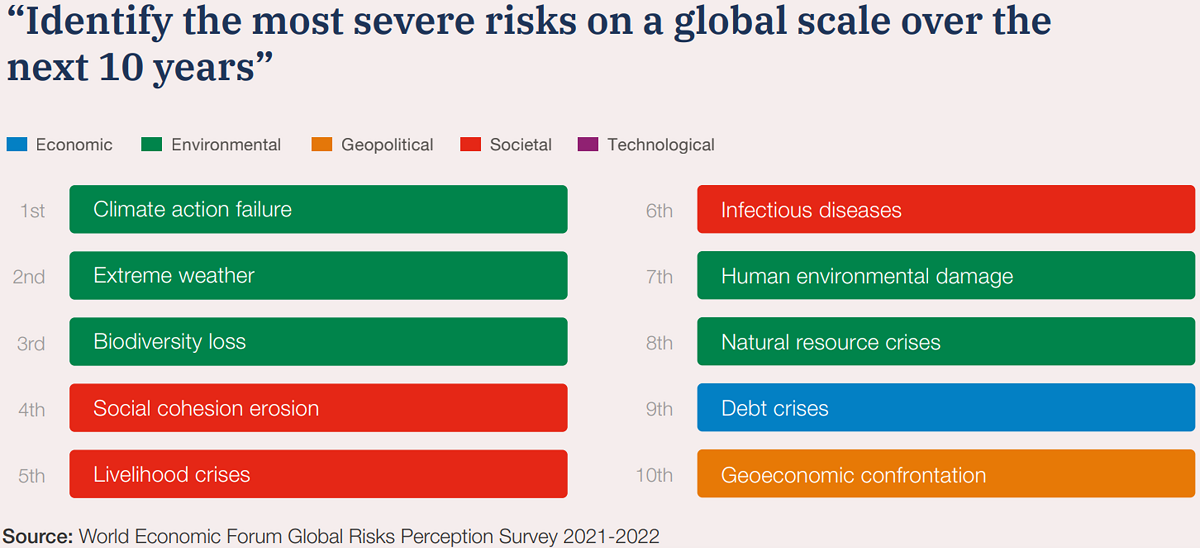
Consistent volatility, multiple surprises and fractured trajectories is the global outlook for at least the next few years.
This is the view of the majority of contributors to the annual Global Risks Report 2022 produced by the World Economic Forum, with over 80% worried or concerned about the future, according to WEF's supporting Global Risks Perception Survey 2021 - 2022.
Boards potentially need independent assurance on critical risks now more than ever before. These are tough times. This insightful, hard-hitting read looks through the lens of the Chief Audit Executive (CAE) to give a practical summary of the key points from the 2022 WEF report.
Top risks
Environmental risks continue to dominate. Over the last two years, government struggles to contain the pandemic and a lack of global collaboration offer a sobering view of prospects for addressing the climate crisis.

But crises also lead us down unexpected paths. Nothing is certain and WEF’s report encourages readers to consider that the consequences of stakeholder behaviours and actions will drive a range of risk outcomes. Be prepared for the probable to the improbable and the manageable to the severe.
Internal auditors gain insight into national and business perspectives on risk priorities from the WEF report, which is the output of the Global Risks Perception Survey (GRPS) that brings together over 1000 perspectives from the worlds of commerce, charity, politics, science, activism and academia. Additionally, 12,000 business leaders ranked the same risks for only a 0-2 year time horizon in an Executive Opinion survey.
Unsurprisingly, infectious diseases feature in the risk profile. While developed nations have vaccinated more than 70% of their population, some such as the UK and Ireland receiving boosters, and Israel issuing a second booster, the vaccination rate in the poorest 52 countries, home to 20% of the world’s…